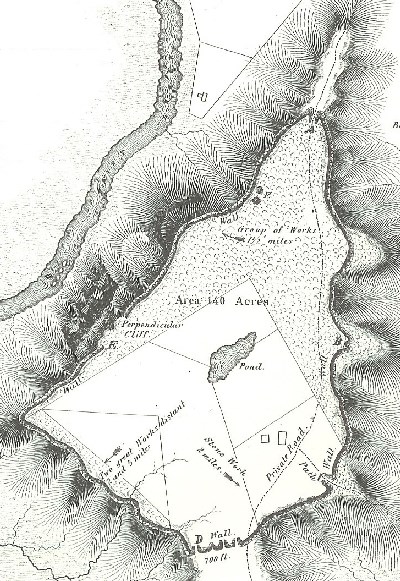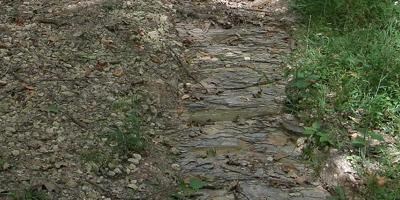
Squier & Davis Hilltop CeremoniesAmerican Indians built dozens of monumental earthen mounds and enclosures in the Ohio River valley during the Hopewell episode between about 1600 and 2000 years ago. Most of these enclosures were built in river valley settings using a standard unit of measure in precise geometric forms of circles, squares, octagons, and long parallel lines. But at least a dozen hilltop enclosures were built in the hilly Appalachian Plateau province of south-central Ohio during the Hopewell episode. The earth and stone walls of these hilltop enclosures follow the irregular contours of prominent flat-topped hills. When non-Native colonists first encountered the hilltop enclosures in the 1800s, they thought they were seeing ancient fortifications: “The natural strength of such positions, and their susceptibility of defense, would certainly suggest them as the citadels of a people having hostile neighbors, or pressed by invaders” (Squier and Davis, 1848:9). But more recent archeological investigations instead suggest the hilltop enclosures were used as ceremonial centers, much like the geometric enclosures in the valley bottoms. Fort Ancient Earthworks & Nature Preserve - Ohio History Connection Fort Hill Earthworks & Nature Preserve - Ohio History Connection

NPS Photo / Tom Engberg Geologic HistorySpruce Hill is a small sliver of Ohio's geologic library, rich with a beautiful biodiversity, and laden with evidence of the prehistoric Hopewell culture. Even the trail that leads up to the storied plateau area contains geologic "windows" that allow us to see back in time. The sediment-washed trail has countless exposed layers of shale which date to almost 400 million years ago. Rippled sandstone, which dots the trail, is direct evidence that the area was once under the cover of a sprawling ancient sea. The lush woodland hillsides nurture rare and exotic flora and lively fauna of all shapes and sizes. 
Present and FutureSpruce Hill Earthworks is owned by the Arc of Appalachia Preserve System. Please contact the Arc of Appalachia Preserve System for additional information or access to the site. 
NPS Photo / Tom Engberg Resources and ReadingsArc of Appalachia |
Last updated: October 28, 2024
